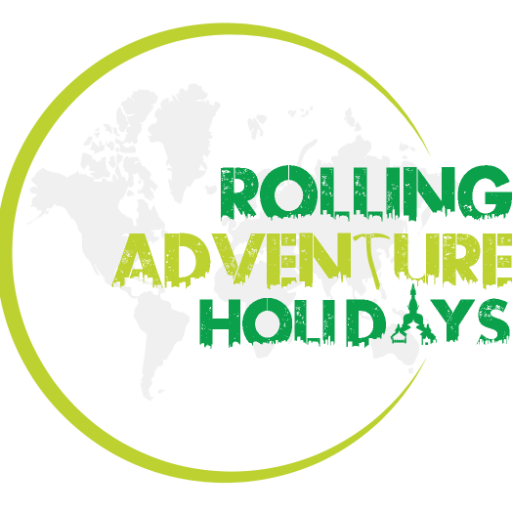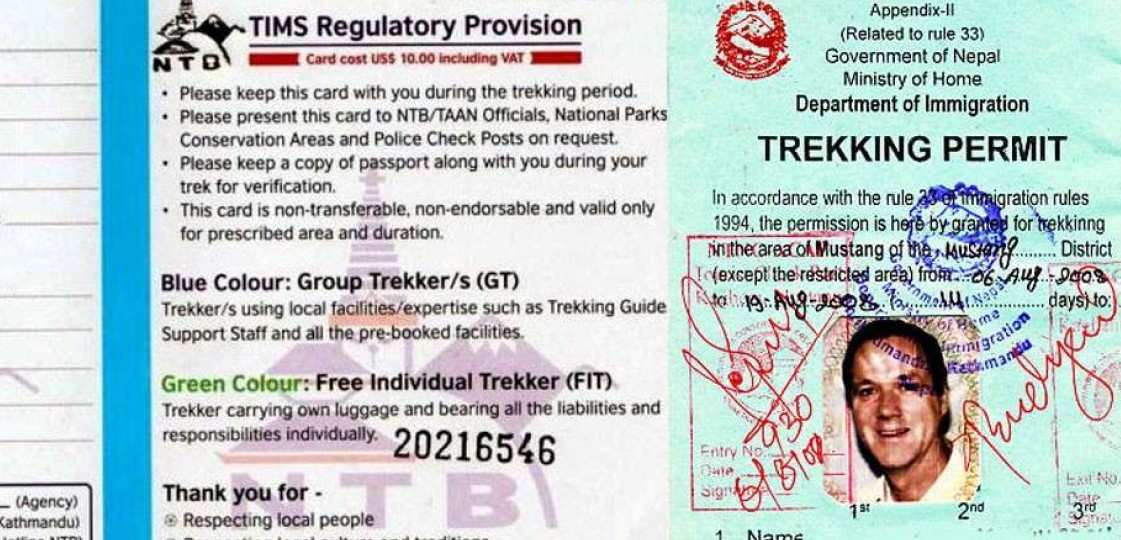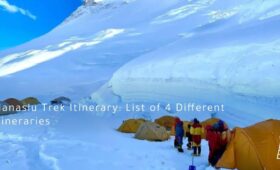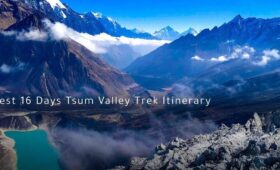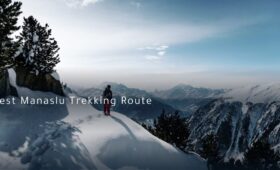Introduction
Trekking is the act of traversing rugged terrain on foot for recreational purposes. It is a form of walking undertaken to explore and admire the beauty of the region. It typically occurs on the path that remains undisturbed. In Nepal, trekking is conducted at an elevation below 5800 meters.
Nepal allows FIT (Free Individual Trekkers) and small groups. FIT’s are strictly forbidden in Restricted Areas, which are highly regulated by the Nepalese Government. Only the Department of Immigration Permit allows trekking in these areas.
Trekking permits are crucial for preserving the environment and supporting local communities in trekking destinations. By requiring permits, authorities can control the number of trekkers in sensitive areas, reducing environmental damage and promoting sustainable tourism practices. The revenue generated from permit fees can be used for conservation efforts, trail maintenance, and community development projects, benefiting residents and preserving their traditional way of life.
Types of Trekking Permits
- TIMS (Trekkers’ Information Management System) Card
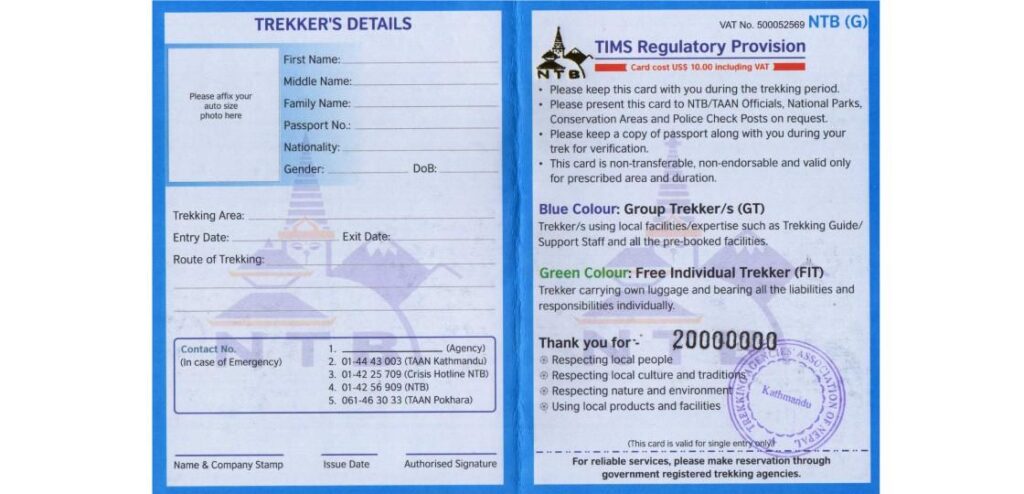
In Nepal, all treks require a TIMS card (Trekkers’ Information Management Systems). This card ensures that tourists are safe at various checkpoints in remote areas, allowing for active tracking of trekkers and recording tourist visits. There are two types of TIMS cards: one for Independent Trekkers and the other for Organized Trekkers. Here’s the distinction between the two:
- Independent Trekkers TIMS Card:
- This card is for individual trekkers who are trekking independently without the services of a trekking agency.
- Independent trekkers are those who organize their trekking arrangements, including route planning, accommodation, and logistics, without the assistance of a registered trekking agency.
- The Independent Trekkers TIMS card requires trekkers to provide their details, trekking itinerary, and emergency contact information.
- Organized Trekkers TIMS Card:
- This card is for trekkers who participate in a trekking program organized by a registered trekking agency in Nepal.
- Organized trekkers avail themselves of the services of a licensed trekking agency, which provides guides, porters, permits, accommodation, and other logistical support during the trek.
- The Organized Trekkers TIMS card includes details of the trekking agency, group size, itinerary, and other relevant information provided by the agency.
TIMS Card Fees:
- The TIMS Card fee varies depending on whether you’re trekking independently or with an organized trekking group.
- For Independent Trekkers (Green TIMS Card): NPR 2,000 (approximately USD 20)
- For Organized Trekkers (Blue TIMS Card): NPR 1,000 (approximately USD 10)
- Trekking agencies may charge additional service fees for obtaining TIMS Cards on your behalf.
2. Restricted Area Permits (RAPs): Trekking in certain regions of Nepal requires permits due to their sensitive border or cultural significance for preservation. The Department of Immigration in Kathmandu or authorized agencies issue this permit. By requiring permits, authorities can regulate the number of visitors, manage conservation efforts, and support sustainable tourism practices.
Some trekking routes requiring Restricted Area Permits include:
Upper Mustang Trek:
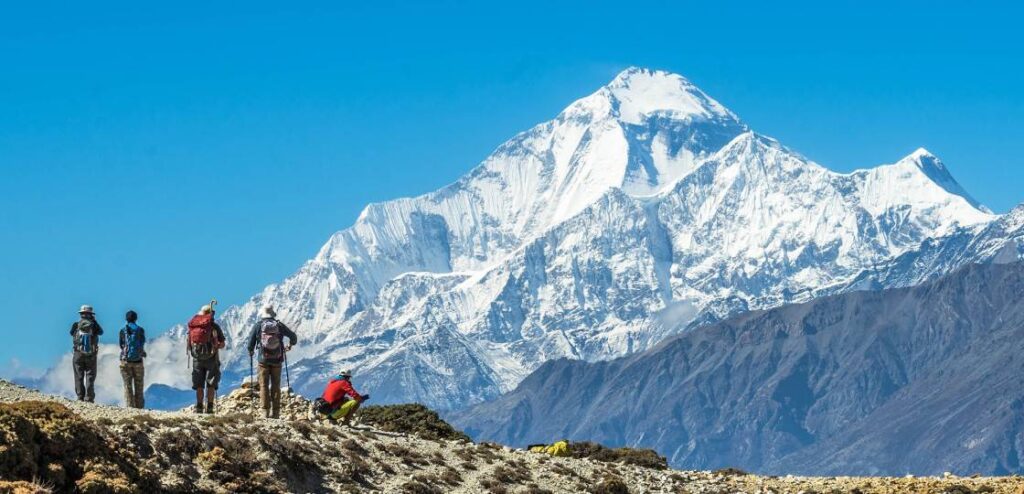
Located in the rain shadow area of the Annapurna region, Upper Mustang is known for its Tibetan-influenced culture, ancient sanctuaries, and empty landscapes.
Dolpo Trek:
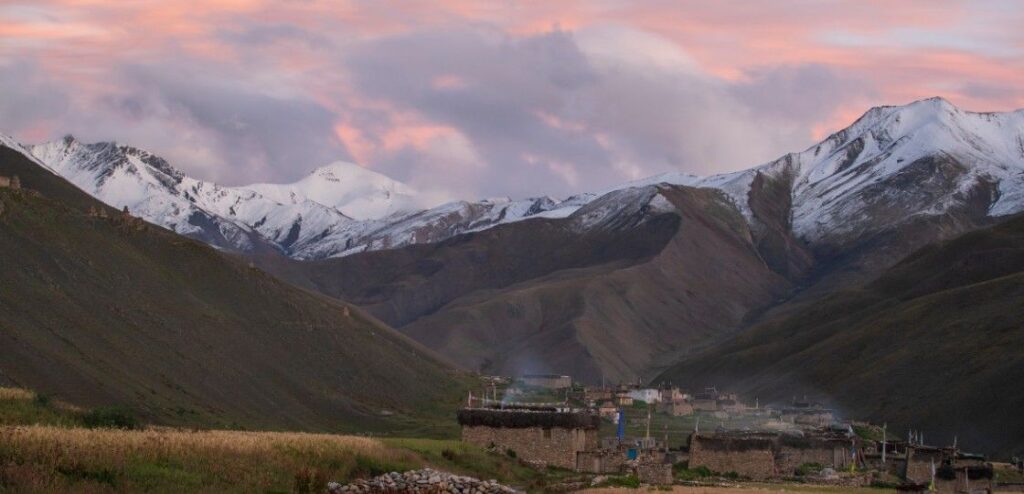
Dolpo, situated in the remote western region of Nepal, is renowned for its unharmed natural beauty, traditional culture, and unique landscapes. The permit is necessary for both the Upper Dolpo and Upper Dolpo treks.
Manaslu Circuit Trek:
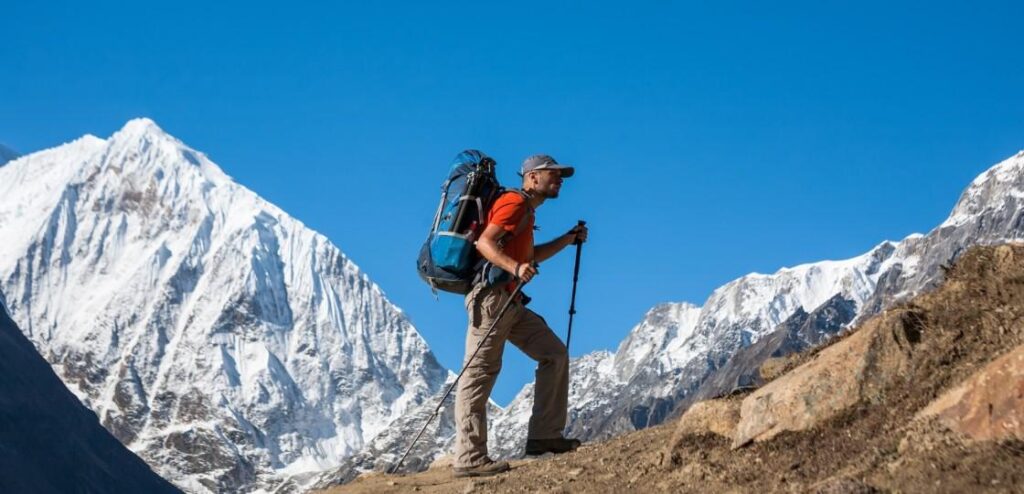
While not entirely forbidden, the Manaslu region requires special access, either as a Restricted Area Permit or a Manaslu Conservation Area Permit, depending on the route taken.
Kanchenjunga Circuit Trek:
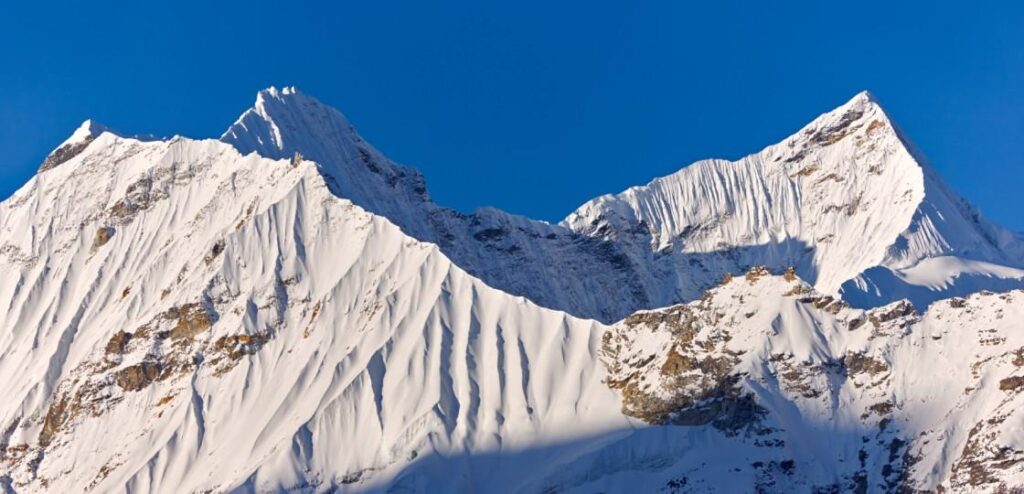
Trekking in the Kanchenjunga region, particularly the route around the third highest peak in the world, Mt. Kanchenjunga, requires a Restricted Area Permit.
Makalu Base Camp Trek:

Located in the Makalu-Barun National Park, this trek to the base camp of Mt. Makalu requires a Restricted Area Permit.
Restricted Area Permit Fees:
- Fees for Restricted Area Permits vary depending on the specific region you plan to trek in.
- For example, the permit fee for the Upper Mustang is USD 500 per person for the first 10 days and USD 50 per extra day during the trekking season (March to November).
- In Dolpo, the permit fee is USD 500 per person for the first 10 days and USD 50 per extra day during the trekking season.
- Fees for other restricted areas like Manaslu and Kanchenjunga may differ, and it’s essential to check with the relevant authorities or trekking agencies for the most up-to-date information.
3. National Park/Conservation Area Permits
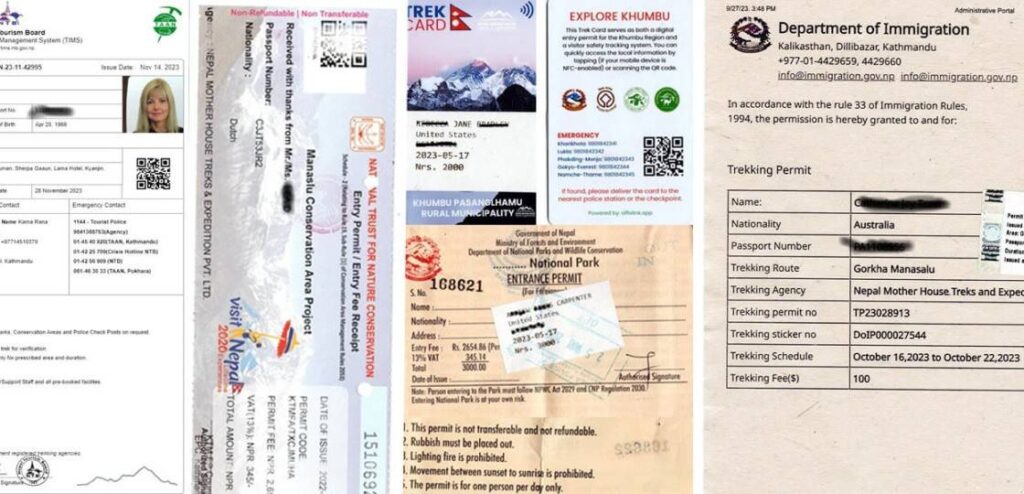
Nepal has 12 national parks designated for the preservation, administration, and utilization of its flora, fauna, landscapes, and natural surroundings.
| SN. | List of National Parks | Per Person cost for Nepali Citizen | Per Person cost for SAARC Members | Per Person cost for Foreign citizens |
| 1 | Chitwan National Park | Rs100 | Rs1,000/ or $8 | Rs2000/ or $16 |
| 2 | Sagarmatha National Park | Rs100 | Rs1,500/ or $12 | Rs3,000/ or $24 |
| 3 | Banke National Park | Rs100 | Rs750/ or $6 | Rs1,500/ or $12 |
| 4 | Bardia National Park | Rs100 | Rs750/ or $6 | Rs1,500/ or $12 |
| 5 | Khaptad National Park | Rs100 | Rs500/ or $4 | Rs1,500/ or $12 |
| 6 | Langtang National Park | Rs100 | Rs1,500/ or $12 | Rs3,000/ or $24 |
| 7 | Makalu-Barun National Park | Rs100 | Rs1,500/ or $12 | Rs3,000/ or $24 |
| 8 | Parsa National Park | Rs100 | Rs750/ or $6 | Rs1,500/ or $12 |
| 9 | Rara National Park | Rs100 | Rs1,500/ or $12 | Rs3,000/ or $24 |
| 10 | Shey-Phoksundo National Park | Rs100 | Rs1,500/ or $12 | Rs3,000/ or $24 |
| 11 | Shivapuri-Nagarjun National Park | Rs100 | Rs600/ or $5 | Rs1,000/ or $8 |
| 12 | Shuklaphanta National Park | Rs100 | Rs750/ or $6 | Rs1,500/ or $12 |
Conservation fees collected from visitors to national parks and conservation areas play a crucial role in funding conservation efforts, habitat restoration, anti-poaching patrols, community development projects, and environmental education programs. These fees contribute to the sustainable management of protected areas, ensuring the long-term survival of endangered species and the preservation of natural habitats.
| SN. | List of Conservation Areas | Per Person cost for Nepali Citizen | Per Person cost for SAARC Members | per person cost for Foreign citizens |
| 1 | Annapurna Conservation Area | Rs100 | Rs1,000/ or $8 | Rs3,000/ or $24 |
| 2 | Api Nampa Conservation Area | Rs100 | Rs500/ or $4 | Rs2000/ or $16 |
| 3 | Blackbuck Conservation Area | Rs100 | Rs500/ or $4 | Rs2000/ or $16 |
| 4 | Gaurishankar Conservation Area | Rs100 | Rs1,000/ or $8 | Rs3,000/ or $24 |
| 5 | Kanchenjunga Conservation Area | Rs100 | Rs500/ or $4 | Rs2000/ or $16 |
| 6 | Manaslu Conservation Area | Rs100 | Rs1,000/ or $8 | Rs3,000/ or $24 |
****
Wildlife and hunting reserves
| SN | Name of reserves | Per Person cost for Nepali Citizen | Per Person cost for SAARC Members | per person cost for Foreign citizens |
| 1 | Koshi Tappu Wildlife Reserve | Rs100 | Rs750/ or $6 | Rs1,500/ or $12 |
| 2 | Dhorpatan Hunting Reserve | Rs100 | Rs1,500/ or $12 | Rs3,000/ or $24 |
The following documents must be presented before trekking in Nepal:
- Online application (trekkers)
- Passport copy
- Visa copy sufficient to cover trekking days
- Lists of trekkers’ names
- Program trekking schedule
- Agency guarantee letter
- Contract with agency
- Certificate of tax exemption for trekking agency
- Documents about the trekkers (foreign nationals) and the Nepalese staff accompanying the trekkers’ insurance coverage
- The Ministry of Tourism, Culture, and Civil Aviation issues a license to operate a trekking business.
- Permission from Nepal Rastra Bank to exchange foreign currencies.
- Program itinerary of the trek
- Certificate of Permanent Account Number Registration
- Bank payment voucher for permit fees
How to obtain a Tims card?
- TIMS Card (Trekkers’ Information Management System):
- TIMS cards can be obtained through the Nepal Tourism Board (NTB) office in Kathmandu or authorized trekking agencies.
- To obtain a TIMS Card, fill out an application form, provide a copy of your passport and two passport-sized photos, and pay the applicable fee.
- The TIMS Card comes in two categories: Green TIMS for individual trekkers and Blue TIMS for trekkers organized by a registered trekking agency.
- The TIMS Card is for most trekking routes in Nepal, excluding restricted areas.
- Restricted Area Permits:
- Trekking in certain regions of Nepal, such as Upper Mustang, Dolpo, Manaslu, and Kanchenjunga, necessitates the acquisition of Restricted Area Permits.
- These permits can be obtained through registered trekking agencies authorized to issue permits for restricted areas or directly from the Department of Immigration in Kathmandu.
- To acquire a Restricted Area Permit, you must complete an application form, provide a photocopy of your passport, itinerary, and passport-sized photographs, and make the necessary payment for the permit fee.
- It’s essential to have a registered trekking agency or guide to obtain permits for restricted areas, as independent trekking is generally not allowed in these regions.
- National Park/Conservation Area Permits:
- National Park and Conservation Area Permits are required for trekking in designated protected areas like Sagarmatha National Park, Annapurna Conservation Area, and Langtang National Park.
- These permits can be obtained at the respective park entry gates or the offices of the National Parks and Wildlife Conservation Department in Kathmandu.
- Some trekking agencies can also assist in obtaining these permits as part of their trekking packages.
If you need help getting trekking permits, our trekking agency Rolling Adventure Holidays can take care of the whole process for you. We will make sure you have all the required permits before your trekking adventure. Moreover, we can offer the necessary advice and support to ensure your trekking experience is safe, enjoyable, and stress-free.
Sustainable and Responsible Tourism Practices
- Preserving the Natural Environment: Responsible trekking practices help minimize environmental impact by reducing waste, and avoiding damage to flora and fauna.
- Protecting Local Cultures: Many trekking routes pass through remote villages inhabited by indigenous communities with unique cultures and traditions. Responsible trekking involves respecting local customs and engaging in meaningful cultural exchanges with residents.
- Sustainability of Tourism: Sustainable tourism practices ensure that tourism activities can continue to benefit travelers and local communities.
- Leave No Trace Principles: The Leave No Trace principles provide guidelines to minimize human impact. These principles include packing out all waste, staying on designated trails, minimizing campfire impacts, and respecting wildlife.
- Supporting Local Community: This helps empower residents, preserve traditional livelihoods, and foster sustainable development in trekking regions.
Conclusion:
In conclusion, embarking on a trekking adventure is an incredible opportunity to connect with nature, immerse yourself in diverse cultures, and challenge yourself physically and mentally. As you embark on your trekking adventure, we encourage you to embrace the beauty of nature, immerse yourself in local cultures, and challenge yourself to new heights.
In the end, trekking is not just about reaching the summit or completing a trail—it’s about the journey itself, the experiences we gain, and the connections we make along the way. So, let’s tread lightly, leave a positive impact, and savor every moment of our adventure responsibly. Safe travels and happy trekking!
Frequently Asked Questions (FAQ’s)
1. What are the different types of trekking permits in Nepal?
The most common permits are the TIMS (Trekkers’ Information Management System) card and the National Park/Conservation Area permits. Additionally, some restricted regions require special licenses.
2. What happens if I trek without a permit in Nepal?
Trekking without a permit is illegal and can result in fines, removal, or legal action. It also poses a risk to safety as authorities will need a record of your whereabouts in case of emergencies.
3. How much do trekking permits cost in Nepal?
Permit costs vary depending on the region and duration of your trek. Prices range from a few dollars to over a hundred dollars for restricted areas.
4. Are there any restricted trekking areas in Nepal?
Yes, some areas like Upper Mustang, Dolpo, and Manaslu require special permits and are subject to strict regulations.
5. Do I need a guide or porter to obtain trekking permits?
Generally, you don’t need a guide or porter to obtain permits. However, hiring a guide or porter is recommended for safety and convenience during your trek to gain insight.
6. What is a TIMS card?
The TIMS card is a mandatory registration card for trekkers in Nepal. It helps to keep records of trekkers and track them in an emergency to ensure their safety. It is for the safety purpose to keep details of trekkers in certain regions.
7. What documents do I need to obtain trekking permits?
You will need a copy of your passport, passport-sized photos, and sometimes a trekking itinerary to obtain permits. Consult with our team before being part of the journey.
8. Are there any age restrictions for obtaining trekking permits?
There are no specific age restrictions for obtaining permits, but children under certain ages might need special arrangements or permissions before embarking on the trek.
